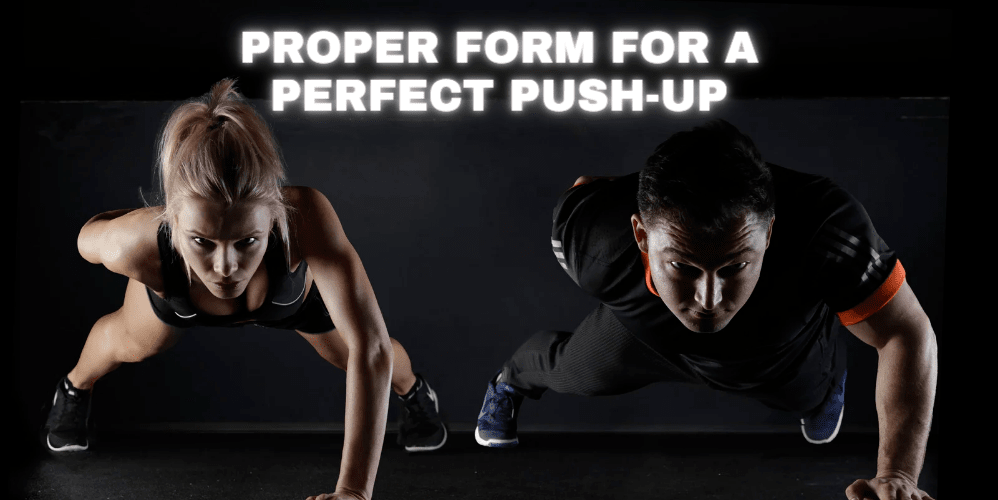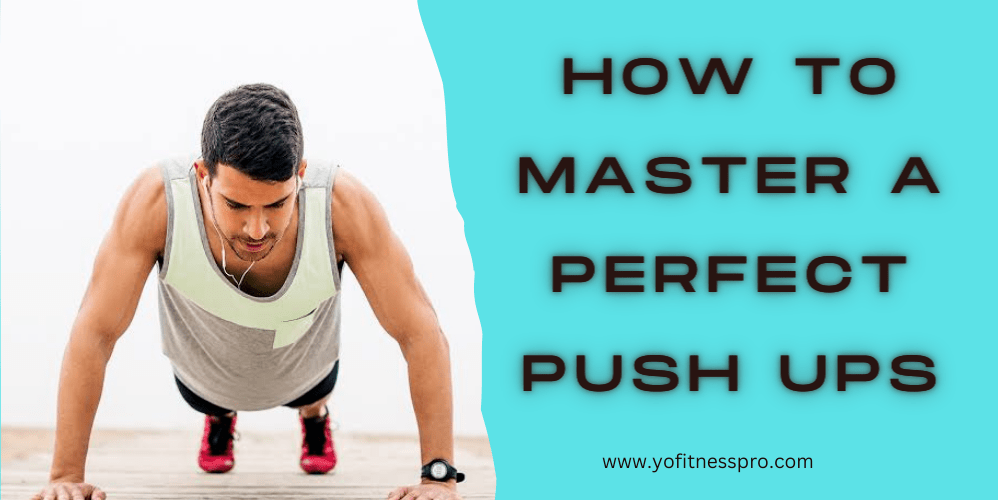Push-ups are one of the most fundamental bodyweight exercises that you can perform, and they are an essential exercise for building upper body strength. They are a highly effective exercise for targeting the chest, shoulders, triceps, and core muscles. Moreover, they can be done anywhere, at any time, without any equipment. The best thing about push-ups is that they are a very versatile exercise. You can perform them in many different ways to make them more challenging or easier, depending on your fitness level. In this article, we’ll be discussing how to master a perfect push-up, step-by-step.
Benefits of Push-Ups:
Push-ups are a highly effective exercise for building upper body strength, but they also offer several other benefits as well. Here are some of the main benefits of push-ups:
Increased Strength: Push-ups help to build strength in the chest, shoulders, triceps, and core muscles.
Improved Posture: Push-ups can help to improve your posture by strengthening the muscles that support your spine.
Increased Endurance: Push-ups can improve your endurance and stamina by increasing the strength of your muscles.
Reduced Risk of Injury: Push-ups help to build a strong core and upper body, which can help to reduce the risk of injury when performing other exercises or activities.
Proper Form for a Perfect Push-Up

To perform a perfect push-up, you need to have proper form. Here are the steps to performing a push-up with proper form:
- Start in a plank position: Begin in a plank position with your hands placed slightly wider than shoulder-width apart, and your feet together.
- Lower your body: Keep your core engaged and lower your body down towards the floor, keeping your elbows close to your sides.
- Keep your body straight: Keep your body straight from head to toe. Don’t let your hips sag or arch your back.
- Lower yourself until your chest touches the floor: Lower yourself down until your chest touches the floor, or until your arms are at a 90-degree angle.
- Push yourself back up: Push yourself back up to the starting position, using your chest, shoulders, and triceps.
- Repeat: Repeat for your desired number of reps.
Common Mistakes to Avoid:
To perform a perfect push-up, there are several common mistakes you should avoid. Here are the most common mistakes people make when performing push-ups:
- Letting your hips sag: This is one of the most common mistakes people make when performing push-ups. It puts unnecessary pressure on your lower back and makes the exercise less effective.
- Arching your back: Arching your back can put too much pressure on your lower back and take the emphasis away from your chest and arms.
- Flaring your elbows: Flaring your elbows out to the sides can put too much pressure on your shoulders, leading to pain and discomfort.
- Lifting your head: Lifting your head can strain your neck and take the focus away from your chest and arms.
How to Progress to Advanced Push-Ups:
Once you’ve mastered the basic push-up, you can progress to more advanced variations. Here are some of the most common advanced push-up variations:
Diamond Push-Ups: To perform diamond push-ups, place your hands close together in a diamond shape under your chest. This variation targets your triceps more than a traditional push-up.
Decline Push-Ups: To perform decline push-ups, place your feet on an elevated surface, such as a bench or step. This variation places more emphasis on your shoulders and upper chest.
Plyometric Push-Ups: Plyometric push-ups involve explosive movements that can help to build power and speed. To perform a plyometric push-up, push yourself off the ground and clap your hands before landing back in the starting position.
One-Arm Push-Ups: One-arm push-ups are a very challenging variation that requires a lot of upper body strength and stability. To perform a one-arm push-up, keep one hand behind your back and perform the push-up with the other arm.
- You May Read This:
- The Benefits of Strength training : How to Build Muscle and Improve Overall Fitness
- Kettlebells: The Ultimate Guide to Fitness and Strength Training
Incorporating Push-Ups into Your Workout Routine:
Push-ups are a great exercise to incorporate into your workout routine. Here are some tips on how to incorporate push-ups into your workout routine:
- Start with a warm-up: Before performing push-ups, make sure to warm up properly. This can include some light cardio, such as jogging or jumping jacks, and some dynamic stretching.
- Perform sets and reps: To build strength and endurance, perform push-ups in sets and reps. Start with 2-3 sets of 10-15 reps and increase as you get stronger.
- Mix up your routine: To prevent boredom and plateaus, mix up your push-up routine by adding different variations or performing them in a circuit with other exercises.
- Challenge yourself: Once you’ve mastered the basic push-up, challenge yourself by progressing to more advanced variations or adding a weighted vest.
Frequently asked questions related to mastering push-ups:
-
How can I master push-ups if I am a beginner?
If you are a beginner, start with modified push-ups, such as knee push-ups, and gradually work your way up to full push-ups. Make sure to maintain proper form and practice consistently.
-
What are some common mistakes to avoid when performing push-ups?
Some common mistakes include letting your lower back sag, not engaging your core, and flaring out your elbows. It’s important to maintain proper form to prevent injury and maximize the benefits of the exercise.
-
How many push-ups should I aim to do in a day?
The number of push-ups you should aim to do in a day depends on your fitness level and goals. Start with a manageable number and gradually increase as you get stronger.
-
Can push-ups help me lose weight?
Push-ups can help you lose weight indirectly by building muscle mass, which can increase your metabolism and help you burn more calories throughout the day.
-
How often should I perform push-ups?
You can perform push-ups daily or every other day, depending on your fitness level and goals. Make sure to listen to your body and take rest days when needed.
-
Can push-ups help me build muscle mass?
Yes, push-ups can help you build muscle mass in your chest, shoulders, triceps, and core.
-
Should I do push-ups before or after cardio?
It’s best to perform push-ups after cardio or as part of a full body workout. This allows you to perform the exercise with proper form and energy.
-
Can push-ups help me improve my posture?
Yes, push-ups can help improve your posture by strengthening your chest, shoulders, and core muscles.
-
How long does it take to master push-ups?
The time it takes to master push-ups varies depending on your starting fitness level and consistency of practice. With regular practice, most people can see improvements within a few weeks.
-
Can I still perform push-ups if I have wrist pain?
If you have wrist pain, you can try modifying your hand placement by using push-up handles or performing push-ups on your fists. It’s also important to make sure you’re maintaining proper form to avoid exacerbating the pain. If the pain persists, consult with a healthcare professional.
Conclusion:
Push-ups are a simple yet effective exercise for building upper body strength and improving overall fitness. By mastering the proper form and avoiding common mistakes, you can perform push-ups safely and effectively. By incorporating push-ups into your workout routine and progressing to more advanced variations, you can continue to challenge yourself and see continued improvements in your strength and fitness level. So, start including push-ups in your workout routine and see the results for yourself!
